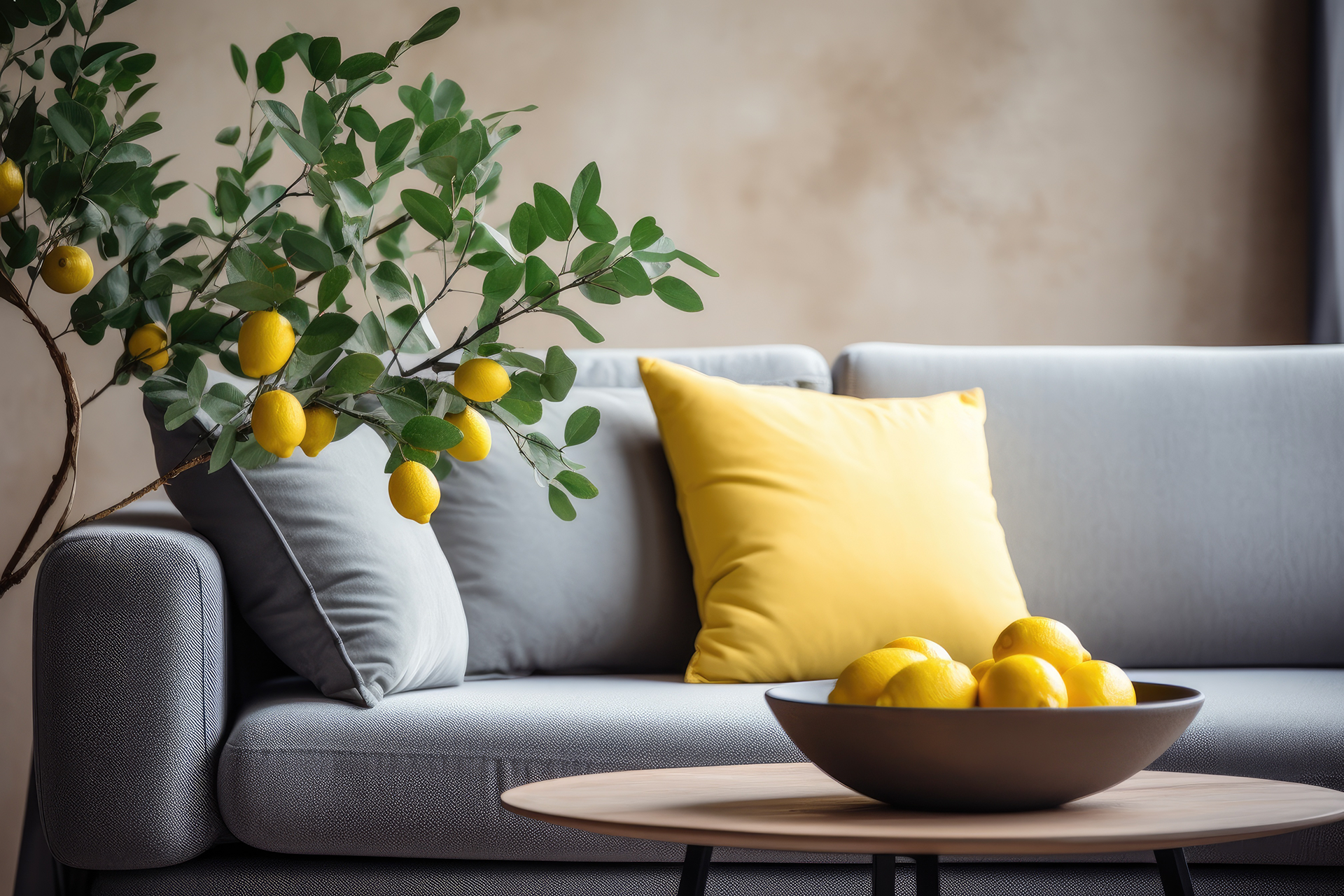Color psychology in home decor: creating mood and ambiance with hues
When we think about decorating our homes, we often focus on furniture, layout, and decorations. Yet, there's a powerful element we sometimes forget: color. The colors we choose for our walls, furniture, and decor can have a big impact on the feel of our living spaces. In this article, we'll explore the world of color psychology in home decor in simple terms, so you can use colors effectively in your home.
Colors and feelings
Colors are like emotions for your home. Warm colors, like red and orange, can make a room feel cozy and lively. Red is linked to love and passion, making it great for bedrooms to create an intimate atmosphere. Orange adds energy, which is perfect for spaces like living rooms or home offices. These warm colors make your home feel inviting and full of life.
On the other hand, cool colors, like blue and green, bring a sense of calm and relaxation. Blue is often chosen for bedrooms and bathrooms because it creates a peaceful atmosphere. Light blues can make a room look bigger, while darker blues add a touch of sophistication. Green brings nature indoors, making your home feel balanced and calm. It's a good fit for living rooms and kitchens. Cool colors help create an environment where you can relax and feel at ease.
 A welcoming living room with warm orange tones. The orange hues infuse the space with energy and vitality.
A welcoming living room with warm orange tones. The orange hues infuse the space with energy and vitality.
Elegance in neutrals
Neutral colors like white, beige, and gray provide a timeless and elegant base for your home decor. White gives a sense of cleanliness and freshness, often used in bathrooms and kitchens. Beige adds warmth and goes well with various decor styles. Gray offers a modern and sleek look, making it ideal for contemporary interiors. Neutral colors are versatile, serving as a backdrop for adding touches of color through decor items.
 The elegance of neutral colors, with a focus on the timeless charm of beige.
The elegance of neutral colors, with a focus on the timeless charm of beige.
The role of accent colors
While main wall and furniture colors set the tone, accent colors add depth and character to your decor. These accent colors can be introduced through items like pillows, rugs, artwork, and smaller decor pieces. They serve to highlight specific areas or features within a room, adding visual interest. Picture a vibrant yellow throw pillow adding energy to a neutral-colored sofa or a striking purple vase becoming the focal point in your living space. Experimenting with accent colors allows you to express your unique style and infuse personality into your home decor.
 A neutral-themed living room where the spotlight is on bright yellow pillows and decorative details, adding a pop of color and vibrancy.
A neutral-themed living room where the spotlight is on bright yellow pillows and decorative details, adding a pop of color and vibrancy.
The versatility of earth tones
In addition to warm and cool colors, earth tones like brown and tan also have a special place in home decor. Brown exudes warmth and comfort, making it a popular choice for living rooms and bedrooms. It can create a sense of stability and reliability in your home's ambiance. Tan, a lighter earth tone, adds an airy and soothing quality, making it suitable for various spaces, including bathrooms and kitchens.
 A peaceful bedroom, featuring earthy brown and tan color tones. The cozy atmosphere is accentuated by these warm colors.
A peaceful bedroom, featuring earthy brown and tan color tones. The cozy atmosphere is accentuated by these warm colors.
Choosing colors to suit room size
The size of a room plays a role in color selection. In smaller spaces, lighter colors like pale blue or soft pink can make a room feel more open and airy. In contrast, larger rooms can handle deeper, more saturated colors without feeling cramped. Darker shades like deep green or rich burgundy can add a sense of coziness and intimacy to larger spaces.
 The transformative power of light blue hues in small rooms. The soft and airy shades of blue create an illusion of spaciousness.
The transformative power of light blue hues in small rooms. The soft and airy shades of blue create an illusion of spaciousness.
Creating a balanced color scheme
Now, let's explore how to put together a cohesive color scheme for your home. One approach is the monochromatic scheme, where you use different shades of a single color. This creates a sense of simplicity and unity, offering an elegant and harmonious look.
Complementary color schemes involve pairing colors that are opposite each other on the color wheel, like blue and orange or red and green. These combinations bring contrast and vibrancy to a space, infusing it with visual excitement. Analogous color schemes, on the other hand, use colors adjacent to each other on the color wheel, such as blue and purple or red and orange. These schemes create a soothing and balanced effect, perfect for those who prefer a tranquil ambiance.
When it comes to decorating your home, remember that colors are your allies in setting the right mood. Whether you go for warm, cool, neutral, or earthy tones, each color brings its own vibe to your space.
Don't be afraid to pick colors that resonate with you personally, regardless of what's trendy. Your home should be a reflection of your style and comfort. So, go ahead, play with colors, and see how they can transform your house into a place that truly feels like home. Happy decorating!
 land
land